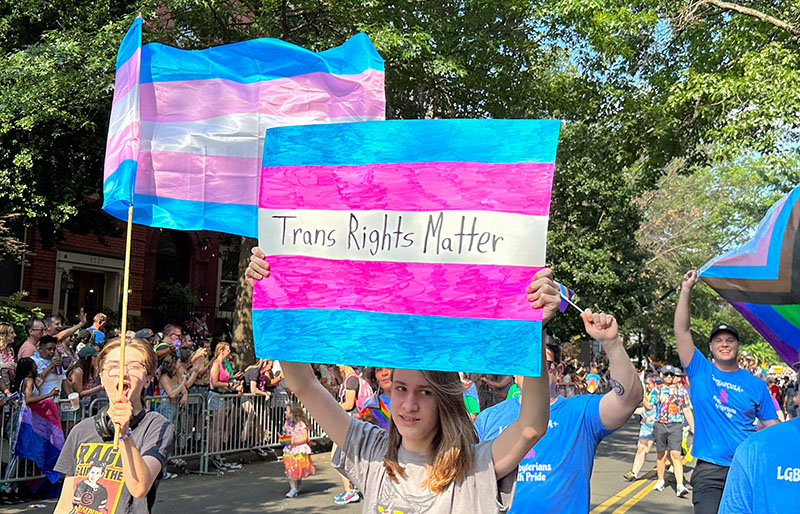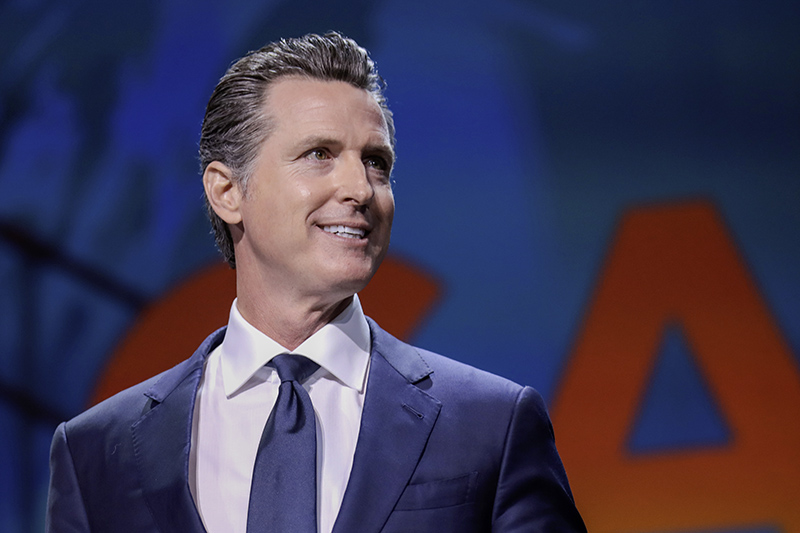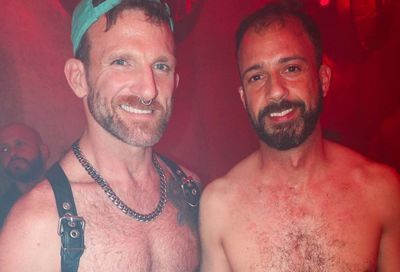First Lady: “The Danish Girl” Brings Lili Elbe’s Story to Life
With "The Danish Girl," Tom Hooper honors the story of Lili Elbe, an oft-forgotten transgender pioneer

Sixty-three years ago, Christine Jorgensen introduced herself to the world. The front page of the New York Daily News shouted “Ex-GI Becomes Blonde Beauty” as Jorgensen — clad in fur and red lipstick — landed in New York, following months spent in her ancestral home in Denmark. Despite the Korean War, the death of an Italian premier, the recent testing of the first hydrogen bomb, and the election of President Eisenhower, Christine Jorgensen commanded headlines across the country, as a nation marveled at the young, slim man who had returned home a confident, witty, beautiful woman.
Jorgensen’s overnight celebrity status enabled her to become an advocate and an icon for the gender identity revolution. She was unashamedly open about her experience, which pioneered the use of a combination of hormone therapy and gender reassignment surgery. Or, as Jorgensen put it in a letter to her parents, “Nature made a mistake which I have had corrected, and now I am your daughter.” However, Jorgensen wasn’t the first to undertake such an immense transition, despite what media claimed at the time — far from it, in fact. Twenty years before Jorgensen would fly to Denmark for her groundbreaking transformation, another woman was already making history.
Lili Elbe’s story isn’t as widely known as Jorgensen’s. Decades before the word transgender would even be uttered, Elbe had transitioned, living and presenting as a woman and undertaking surgery that wasn’t so much risky as potentially fatal. But limited medical knowledge and immensely high risks of complications couldn’t dissuade her from seeking the body she deserved. Societal pressures couldn’t impede her desires to live openly as a woman. Lili Elbe was a lone warrior, fighting a battle that wouldn’t enter the public consciousness for another twenty years.
Elbe isn’t a household name in the same vein as Jorgensen, or Caitlyn Jenner or Laverne Cox — but her struggle, her fight to be herself, is no less deserving of recognition. Without legislation or support groups, and with a medical establishment that believed she required curing of her symptoms, she fearlessly declared her gender identity to any and all who cared to know. Finally, after years languishing in the shadows, her legacy will be commemorated in The Danish Girl, a film adaptation of her life. It’s telling of Elbe’s relative obscurity in history, however, that even the film’s director had no idea who she was.
“I’d thought Christine Jorgensen was the first recipient of gender-confirmation surgery,” says Tom Hooper. “I had no idea it had happened as early as 1930.”
Hooper, the Academy Award-winning director of The King’s Speech and Les Miserables, is sitting in a comfortable suite in The Hay Adams Hotel. In person, he’s handsome, affable, and speaks with the assured intelligence of a man who’s both Oxford-educated and incredibly knowledgable of his latest project. He was first introduced to the story of Lili Elbe while working on The King’s Speech. During a conversation with casting director Nina Gold — a longtime collaborator — he complained about the lack of good scripts available in Hollywood.
“I do know of one great unmade script,” Gold replied. “And it’s called The Danish Girl.”

Developmental Hell
AT THAT POINT, The Danish Girl was languishing in development hell. Three directors had been attached to the project. All had left. Financing had been found, then fell through. Nicole Kidman had once signed on to play Lili Elbe. Charlize Theron, Gwyneth Paltrow, Marion Cotillard and Rachel Weisz were all variously considered for the part of Lili’s wife, Gerda Wegener. Before Lucinda Coxon’s screenplay reached Hooper, it seemed the film would never see the light of day — or the dark of a theater. That all changed once he read it.
“I literally cried when I read the script, I think twice — or no, even three times — and I can’t tell you how unusual that is,” Hooper says. “It’s very hard to find scripts that are moving. Most scripts are hard to even finish, let alone get moved by.”
The script piqued his interest, but Hooper had questions. Who was Lili Elbe? Why was he unaware of her story? Turning to the internet, he was “kind of amazed” to discover a paucity of in-depth information. What’s more, the minimal content that documented Elbe’s life was at least partially inaccurate. As he continued to research and discuss her story, Hooper learned he wasn’t alone. Most people he spoke to were ignorant of Elbe’s life — something Hooper was empowered to resolve.
“I felt that there was an injustice in that, and I do feel like history has a tendency to hard-bake in prejudices of the day,” he says. “Is it any surprise that this extraordinary story of this trans pioneer and her wife had been marginalized? Possibly not, given that there’s been such prejudices against these stories. But there was a part of me that was fired up by that sense of injustice. I wanted to shed light through this film on the real people and put them back in a place in our culture where that would never be forgotten again.”
It was here that another potential roadblock reared its head. Brokeback Mountain had proven that mainstream audiences would accept LGBT content, while Transamerica had garnered an Academy Award-winning nomination for Felicity Huffman as a transgender woman. Society, however, still languished behind. In 2008, when Hooper first read the script, America was a country that still couldn’t get over gay people, let alone the transgender community. Could Lili’s story resonate? The solution lay, as it so often does, in love. The most universal of emotions could anchor the story — Lili’s transition is the momentous change of the narrative, but it’s the love shared between Elbe and her wife, Gerda, that powers it.

Love Story
GERDA AND EINAR WEGENER were Danish painters, married in 1904 and living in both Copenhagen and Paris. Einar was the more successful of the two, specializing in landscapes. Gerda favored portraits, but couldn’t find success with her work beyond illustrations in books and magazines. It wasn’t until a series of portraits depicting a beautiful woman with almond eyes, soft features, and a graceful femininity, arranged in a series of elegant poses, that Gerda would get the recognition she desired. Her work was being appreciated in ways she hadn’t experienced before, but there was a secret to her success: The beautiful woman in her portraits was her husband, Einar.
When a friend ran late for a portrait sitting, Gerda asked Einar to model for her, complete with stockings and heels. The experience would transform Einar, who felt immeasurably comfortable in the clothes. When the model eventually arrived, she christened Einar “Lili” after the flowers she was carrying and the name stuck. Lili would start to dress in women’s clothing at home, becoming more sure of herself before eventually presenting to society as Einar’s sister. When the public learned that the woman in Gerda’s paintings was Einar, now Lili, there was shock — but the seed had already been planted. Lili was a woman, and she was determined to see her transformation through to its end. And, perhaps more incredibly, Gerda stayed at her side.
“I think what moved me was this incredible love story,” Hooper says. “I felt like Lili, in a way, had no choice. Lili had to go on that journey, and the script portrayed that very well. Gerda does have a choice. She could have walked away or stepped away or left [Einar]. I do think it was in part because of the love that they shared, it created a kind of space where Lili could be truly seen. Gerda had that ability to look at her husband in a radical way or a new way and see the femininity.”
If audiences beyond the LGBT community were to take to The Danish Girl, it would be for the universality of its themes, and that required leads who could convincingly portray the love between Lili and Gerda that the script demanded. For Lili, there was no contest. Hooper had his heart set on Eddie Redmayne, who he’d worked with on HBO’s Elizabeth I. With a copy of the script in hand, Hooper walked up to Redmayne while filming Les Misérables in 2012.
“I was at the Les Misérables barricades,” Redmayne recalls in press materials for the film, “and Tom said, ‘I would like you to read something.’ [He] then got me the script and I sat down to read it, knowing nothing about it. I was profoundly moved, it blew my mind. I found it extraordinarily passionate and deeply felt. I told Tom I wanted to be part of telling this story.”
Redmayne, who gave an Oscar-winning performance as Stephen Hawking in Theory of Everything last year, was a controversial choice. Some, upon learning of the casting of a cisgender man in the lead role, were upset that Hollywood had once again seemingly ignored the transgender community, despite The Danish Girl employing numerous transgender actors and extras. However, if there were echoes of Roland Emmerich’s dreadful Stonewall, which was slammed for whitewashing history, Hooper wasn’t concerned. He was confident that Redmayne was right for the part — even more so after casting the role of Gerda.

Rising Star
ALICIA VIKANDER IS one of Hollywood’s rising stars. The Swedish actress has starred in Anna Karenina, the Academy Award-nominated Danish film A Royal Affair, and received acclaim for her performance in Ex Machina earlier this year. On paper, she had everything Hooper wanted for his vision of Gerda.
“There was a purist part of me that thought it would be lovely to have a Scandinavian actor at the center of the movie, so it’s not Anglo-American or British without getting that quality,” he says. But that’s not all, as his choice for Gerda would have to match Redmayne’s talent — no mean feat. “It’s quite intimidating when you’ve got Eddie Redmayne, working out who is the actress who can go one-on-one with Eddie at his level, or maybe even at a level that will push him to up his game.”
Vikander was more than up to the task. Hooper received an advanced copy of Ex Machina (“which I loved, and was on the edge of my seat watching”), and when she came for her audition with Redmayne she told Hooper and the film’s producers something that seemed certain to seal her fate: her father had a new job, one in which he worked with transgender people. “I’m like, ‘This is getting intimidatingly perfect, so let’s hope the acting is good,'” Hooper recalls.
But it was better than good. As Redmayne and Vikander finished their scene, where Gerda confronts Lili after she kisses a man at a ball, they turned to look at Hooper. He was in tears.
“Not a lot of suspense about who you’re going to cast now, Hooper!” Redmayne roared.
“No, no! I’m totally objective, let’s go again!” Hooper retorted.
But the truth was evident. Vikander’s openness, Hooper admits, sealed her role as Gerda. “I feel that there’s a Scandinavian energy that’s very open, very free, very progressive, very emotionally open, quite different from the British emotional reserve,” he states. He felt lucky to have found Vikander, particularly when they began discussing Gerda and their vision for the character.
“Gerda is a woman in the 1920s saying ‘I’m a professional, I’m an artist, I have a right to be driven to be passionately pursuing my subject.’ All of which were quite radical things for a woman in the twenties to say about herself,” Hooper says. “And both Alicia and I talked about how for centuries men had defined women’s gender identity, and the beginning of the twentieth century was an amazing phase when women started to reclaim the construction of their own gender identity for themselves. Gerda’s one of these magnificent women who was doing that and is definitely an early feminist. And so we wanted to capture the strength of her.”
Hooper equates Vikander’s talent with Laura Linney, who he worked with on the HBO miniseries John Adams. Vikander was able to deftly balance the pain Gerda experiences as she loses her husband, with the innate love she feels for Lili and her desire to aid in her transition. She is a good character, something Hooper believes is hard for an actor to truly accomplish.
“We often quite like the villainous or the naughty characters,” he says. “Gerda is a truly good character and yet [Vikander] makes goodness mesmeric to watch.”

Fictionalized Reality
OF COURSE, IT’S NOT quite the reality of Gerda Wegener, stuck as The Danish Girl is between the worlds of fiction and fact. David Ebershoff’s original novel carries the disclaimer that it is “highly fictionalized” — Gerda is Californian, for instance — but while Lucinda Coxon’s script attempts to get closer to the truth of Lili and Gerda’s lives, it still glosses over the cracks for the sake of their tale as a love story for the ages. Gerda, for instance, has long been discussed as being at least bisexual, if not a lesbian, but such explorations of her sexuality are missing from The Danish Girl. She and Lili were certainly in love, but their relationship didn’t last in quite the manner Hooper and Coxon have captured. Asked about the potential for his audience to Google Lili Elbe and learn that the reality is somewhat removed from the close-knit romance depicted onscreen, Hooper isn’t dissuaded.
“Gerda married an Italian diplomat and went to live in Morocco. The marriage failed after three years — he basically cleaned her out financially — and she had to go back to Copenhagen and live out the rest of her life alone,” Hooper easily recalls. “And so, when I look at the whole story, I feel like there is no doubt that Lili was the love of her life. There’s no contest there.”
It helps that Gerda and Lili’s love enables Hooper to better frame the latter’s story. With an abundance of LGBT cinema containing tragic story arcs for transgender characters, Hooper was determined that his film “make the portrayal of the trans narrative as positive as I could within the context.” That context is the medical risk of the surgeries Lili was electing to have performed to aid in her transition. Coupled with her strong desire for motherhood, the limited scope of science at the time would eventually lead to her death in her late forties, after a failed surgery to craft the necessary anatomy to enable her to have a child. Rather than dwell on her bittersweet ending, Hooper wanted to “find as much optimism and joy, given where the story is going, as I could. I felt that love was the way of doing that.”
That’s not to say that Hooper has watered down Lili’s transition in favor of her relationship with Gerda. One scene in particular depicts Lili exploring her body — completely naked — and it’s a masterfully shot sequence, with Hooper and Redmayne working in sync to bring a transformation in Lili’s perspective of herself.
“The scene was Lili discovering her smile for the first time, and Lili seeing Lili for the first time and recognizing her smile for the first time in the mirror,” Hooper says. “That was one of the most breathtaking moments for me as a director, and Eddie was in an extraordinary space when we shot that. I’ve never seen him quite go to such — I don’t know where he went, but it was a very deep place to do that.”
That exploration of Lili’s personal journey came from numerous meetings with transgender people to discuss their experiences with transitioning. Redmayne wanted to accurately capture the actions, the explorations, the mannerisms required to convey Lili’s acceptance of her womanhood.
“That was most important of all for me, meeting people from the trans community and hearing about their lives, their strengths, their realities,” Redmayne previously stated. “Many of the trans women I spoke to described how, before transitioning, in order to survive in society, they created ways in which to live life in their assigned gender. That could involve putting a framework up.”
Einar’s framework, and its dissolution over the course of the film as Lili moves to the fore, were an important part of the process.
“Physicality is always something I like to get into with a character because it’s a massive part of who we are,” Redmayne continued. “Use of hands always interests me. I knew I wanted to show moments of Lili’s true gender, even when she was living as Einar. Was it the way in which she slept? I looked into that.”

Affecting Change
WITH ALL THE EFFORT Hooper put into capturing Lili’s transformation — her movements, mannerisms, fashion sense, relationships and surgeries — has he considered the wider impact his film could have on someone who hasn’t come to terms with their own gender identity, or to someone living in a country where being transgender is illegal? He pauses for a moment while considering his answer.
“I look at it just in that seven year window I’ve been involved, where I’ve gone from the movie being considered too risky to do, hard to finance, hard to cast, hard to get distribution,” he says. “Now, it’s considered an obvious film to make, or a timely film to make. So the culture is capable of incredibly rapid change.”
Hooper isn’t satisfied with just a cultural shift in studios approving films like The Danish Girl, however. He wants it to build into real change — the kind of change that affects legislative agendas.
“I think it’s something like thirty, thirty-one states where you can be fired for being transgender,” he says, “which is absurd. Will [the film] help in the fight against transgender hate crimes and acts of violence, which have been pretty horrific, particularly against trans women of color, this year? I really hope that it might take the general audience on a journey to open their hearts and minds up to people who’ve been marginalized for too long, and that would be wonderful.”
It helps that The Danish Girl has already made history. Alongside Amazon’s Transparent, the Emmy- and Golden Globe-winning drama which stars Jeffrey Tambor as a transgender woman, The Danish Girl was screened at the White House last month as part of a Champions of Change event, which honored nine LGBT artists and activists for their work. The Danish Girl and Transparent are the first transgender-centric media to be screened at the White House, and for Hooper and the film’s production team, it was a momentous occasion — not least given the project’s lengthy and troubled production history. Hooper recalls standing next to producer Gail Mutrux, who first optioned the film in 2000 and has suffered through every stumble until Hooper came on board. “We’re in Washington at the White House, and I’m like, ‘Now do you believe that the film’s being made?'” he laughs. “‘We’re at the White House, invited by Obama to talk about the film, you must feel safe.’ And she’s like, ‘Yeah I feel safe.'”
For Hooper, The Danish Girl couldn’t be more perfectly timed. President Obama may be the first president to ever use the word transgender, but there was one other event this year that cemented 2015 as the year transgender rights finally received the attention they deserve. Two weeks after shooting wrapped on The Danish Girl, Bruce Jenner sat down with Diane Sawyer to confirm that he was transgender (at the time, Jenner was still using male pronouns). Then, this summer, an even more momentous reveal on the cover of Vanity Fair.
“It’s very funny because I was on a shoot with Annie Leibovitz,” Hooper says, his speech animated, “and Annie was shooting Alicia and Eddie and she took me aside and said ‘Don’t tell anyone, but I’m about to go and shoot Caitlyn Jenner!’ And so I got a kind of heads-up that this was all about to hit the world.”
The result is that audiences are perhaps better prepared than ever before for a film with a transgender lead character. Lili Elbe’s story may finally be heard and appreciated by an audience that, even a year ago, might have lacked interest. But Hooper isn’t concerned about the potentially narrow focus some may apply to his film. He’s confident enough in its central themes that everyone will be able to take away something beyond Lili’s incredible, pioneering efforts to be herself.
“I had an incredibly moving experience at the premiere,” he recalls. “A friend of mine in L.A. had been paralyzed two years ago from the neck down, and his then girlfriend chose to stay with him and to nurse him and to love him. He said he was very moved, because she had the choice to go and she stayed, and so he was very moved by the act of caregiving, the fact that Gerda chose to stay. Everyone has their own route in, but that’s what fascinating about film, because you can make a very specific story and then the echoes can be very wide.”
Speaking with Hooper, who talks so eloquently about transgender issues and his hopes for future change, there is undoubtedly a current of passion that many in the LGBT community will resonate with. Asked why he prefers to film period pieces, Hooper responds that he prefers being in a dialogue with things that are electric in current culture. That transgender rights are so important right now, that we’re so embroiled in legislation and discrimination and a slow, steady stumble towards greater equality isn’t lost on Hooper. With The Danish Girl, he’s keenly aware of how current its subject matter is — for better or worse.
“I think this is another example where, even though the story is almost 100 years old, it’s extraordinary how topical it is,” he says. “And actually, it should not be topical at all, because in theory, we should have moved way beyond it being topical.”
The Danish Girl opens December 11 at area theaters. For ticket information, visit fandango.com.
Support Metro Weekly’s Journalism
These are challenging times for news organizations. And yet it’s crucial we stay active and provide vital resources and information to both our local readers and the world. So won’t you please take a moment and consider supporting Metro Weekly with a membership? For as little as $5 a month, you can help ensure Metro Weekly magazine and MetroWeekly.com remain free, viable resources as we provide the best, most diverse, culturally-resonant LGBTQ coverage in both the D.C. region and around the world. Memberships come with exclusive perks and discounts, your own personal digital delivery of each week’s magazine (and an archive), access to our Member's Lounge when it launches this fall, and exclusive members-only items like Metro Weekly Membership Mugs and Tote Bags! Check out all our membership levels here and please join us today!
























You must be logged in to post a comment.